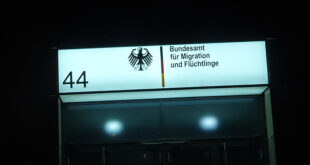Italy declared a nationwide state of emergency on Tuesday for the next six months following the exceptional increase in migrants continuously arriving via the Mediterranean routes.
On Tuesday, the Council of Ministers led by Prime Minister Giorgia Meloni declared a national state of emergency on immigration after the Civil Protection and Sea Policies Minister Nello Musumeci proposed it. The decision also comes after a meeting between Musumeci and Interior Minister Matteo Piantedosi.
Last February, the Italian parliament approved the so-called ‘Code of Conduct for NGOs’ – a government decree establishing a code of conduct for ships intervening to rescue migrants – despite criticism from the UN and humanitarian groups.
Migration flows in recent months have strained the capacity of Italy, according to Musumeci, who called for a “responsible approach” towards migrants and their rights.
In particular, the minister highlighted the difficulty in managing the flows arriving at the islands – Lampedusa and the entire southern coast of Sicily – areas where first reception hotspots are constantly collapsing.
According to Interior Ministry data, 31,292 migrants landed between 1 January and 11 April. During the same period in the previous two years, arrivals were significantly lower: 7,928 in 2022 and 8,505 in 2021.
According to UN figures, more refugees drowned on their way across the Mediterranean Sea in the first three months of this year than at any time in the last six years. Between January and March, 441 people lost their lives on this route towards Europe, as the International Organisation for Migration (IOM) announced on Wednesday. A “human catastrophe”, says one expert – and calls on the EU to act.
Only on Tuesday, according to the Tunisian coast guard, ten people died trying to cross the Mediterranean. IOM Director Antonio Vitorino cited “delays and gaps” in European search and rescue missions as reasons for the rise in the death toll. In at least six accidents since the beginning of the year, delays in rescue had led to the deaths of a total of 127 people. In a seventh accident, no help was sent.
The European Union has greatly reduced its attempts to find and rescue refugees in distress at sea in recent months. Vitorino called for “proactive coordination of EU states” in the search and rescue of migrants in distress at sea. Since 2014, more than 20,000 people have died in the Mediterranean.
The crossing of the central Mediterranean is considered the world’s deadliest route for migrants and refugees. Nevertheless, every year tens of thousands dare to make the dangerous crossing on boats that are often barely seaworthy in the hope of a better life in Europe..
Adira Kallo with agency reports
 THE AFRICAN COURIER. Reporting Africa and its Diaspora! The African Courier is an international magazine published in Germany to report on Africa and the Diaspora African experience. The first issue of the bimonthly magazine appeared on the newsstands on 15 February 1998. The African Courier is a communication forum for European-African political, economic and cultural exchanges, and a voice for Africa in Europe.
THE AFRICAN COURIER. Reporting Africa and its Diaspora! The African Courier is an international magazine published in Germany to report on Africa and the Diaspora African experience. The first issue of the bimonthly magazine appeared on the newsstands on 15 February 1998. The African Courier is a communication forum for European-African political, economic and cultural exchanges, and a voice for Africa in Europe.

















